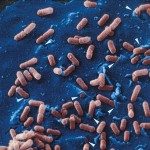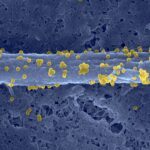Link to Pubmed [PMID] – 16102958
Curr Opin Cell Biol 2005 Oct; 17(5): 489-98
Epithelia are highly organized structures adapted to protect the underlying tissues from external aggressions, including microbial infections. Consequently, pathogens have evolved various strategies to target directly or indirectly intercellular junctions and/or components that maintain the structure of epithelia. Interestingly, some extracellular pathogens secrete enzymes that modify the extracellular part of junction components. Others produce toxins that are endocytosed and act from the inside of the cell to disrupt epithelial junctions. Other pathogens may directly inject into cells factors that are targeted to and destabilize the junctions, or that interact with signaling cascades that affect junction stability. Finally invasive bacteria or viruses may, by entering into cells, destabilize the junctions by targeting junction components directly or by inducing a series of events that lead to chemokine secretion, polymorphonuclear recruitment and inflammation.



